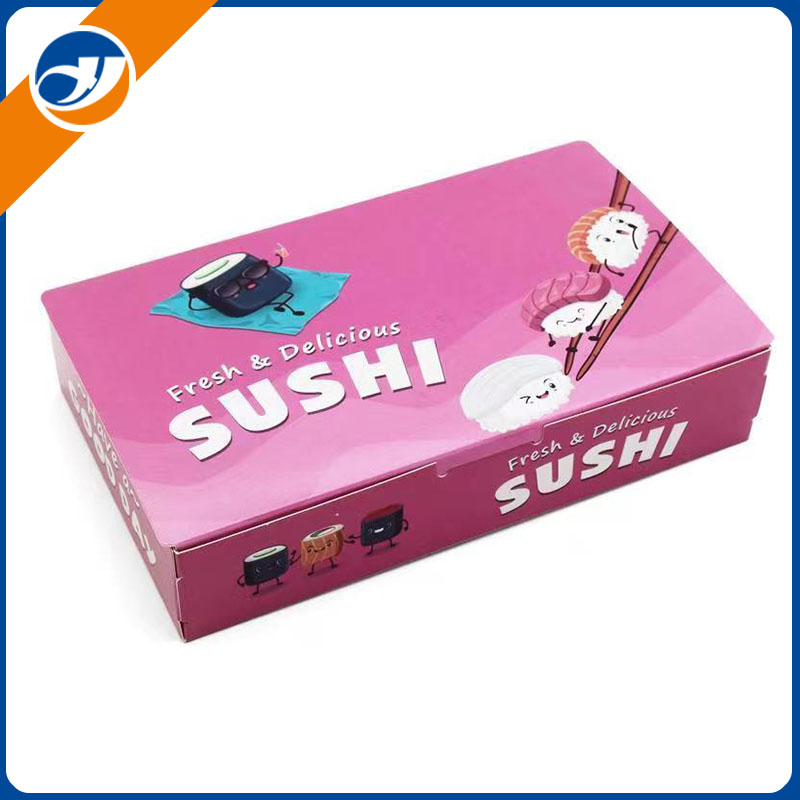
- English
- Español
- Português
- русский
- Français
- 日本語
- Deutsch
- tiếng Việt
- Italiano
- Nederlands
- ภาษาไทย
- Polski
- 한국어
- Svenska
- magyar
- Malay
- বাংলা ভাষার
- Dansk
- Suomi
- हिन्दी
- Pilipino
- Türkçe
- Gaeilge
- العربية
- Indonesia
- Norsk
- تمل
- český
- ελληνικά
- український
- Javanese
- فارسی
- தமிழ்
- తెలుగు
- नेपाली
- Burmese
- български
- ລາວ
- Latine
- Қазақша
- Euskal
- Azərbaycan
- Slovenský jazyk
- Македонски
- Lietuvos
- Eesti Keel
- Română
- Slovenski
- मराठी
- Srpski језик
Why Sushi Box is the Perfect Meal for On-the-go
2024-09-30

Why is Sushi Box so popular for people on-the-go?
Sushi Box offers several benefits that make it the perfect meal for people who are always on-the-go. Firstly, it is easy to carry around since it comes in a compact container. Secondly, it does not require any utensils, making it a great option for those who want to eat while they work or commute. Thirdly, Sushi Box is a healthy meal that consists of fresh ingredients, such as fish, vegetables, and rice. Fourthly, it is customizable, allowing customers to choose their favorite ingredients and create a unique meal. Lastly, Sushi Box is widely available in restaurants, supermarkets, and convenience stores, making it a convenient option for people who are short on time.What are the different types of Sushi Box?
Sushi Box comes in various types, each with its own unique flavor and presentation. Some of the popular types include California Roll Sushi Box, Spicy Tuna Sushi Box, Salmon Sashimi Sushi Box, and Veggie Sushi Box. There are also vegetarian and vegan options available for those who prefer meatless meals.How can Sushi Box be marketed to busy individuals?
One way to market Sushi Box to busy individuals is by emphasizing its convenience and portability. Companies can also offer customizable options that allow customers to create unique meals based on their preferences. Another way is to offer discounts for bulk purchases or subscriptions, which can encourage customers to purchase Sushi Box regularly.Conclusion
In conclusion, Sushi Box is the perfect meal for people who are always on-the-go. It is convenient, portable, healthy, customizable, and widely available. Its popularity is expected to continue growing as more people embrace the value of healthy and convenient meals.Qingdao Zemeijia Packaging Products Co., Ltd. is a leading provider of biodegradable food packaging solutions. Our products are made from eco-friendly materials and are designed to meet the needs of modern consumers. We are dedicated to providing high-quality products and excellent customer service. Contact us at [email protected] to learn more.
10 Scientific Papers on Biodegradable Materials
Klemm D, Heublein B, Fink HP, & Bohn A (2005) Cellulose: Fascinating biopolymer and sustainable raw material. Angewandte Chemie International Edition, 44, 3358-3393.
Thakur VK, Thakur MK, & Raghavan P (2014) Review: Progress in green polymer composites from lignin for multifunctional applications. Progress in Polymer Science, 39, 1922-1942.
Lao X, Cheng Q, Li Y, & Zhuo S (2013) Biodegradable polymer blends and composites from renewable resources. Progress in Polymer Science, 38, 1720-1741.
Gholampour A, Almasi H, Najafi G, & Savabi O (2016) The role of starch nanoparticles in improving the properties of biodegradable poly (lactic acid) films: A review. Carbohydrate Polymers, 144, 88-104.
McCormick CL, & Srinivasan A (2017) Green polymer chemistry: Biobased materials and biocatalysis. ACS Publications.
Wang J, Liu X, Lu C, & Chu F (2013) The potential of polysaccharides from marine organisms as a valuable resource for biocompatible biomedical materials. Scientific World Journal, 2013, 1-11.
Nair LS, & Laurencin CT (2007) Biodegradable polymers as biomaterials. Progress in Polymer Science, 32, 762-798.
Ranjan S, Dasgupta N, & Chakraborty AR (2015) A modern approach to develop biodegradable materials based on protein. Journal of Materials Chemistry B, 3, 5496-5508.
Cooper AI (2015) Synthesis and applications of porous polymer monoliths. Chemical Society Reviews, 44, 5745-5758.
Kaushik R, Kumar P, & Khardenavis A (2014) Degradation of plastics: A brief review. Resources, Conservation and Recycling, 85, 58-64.



